
Manufacturer's Specifications:
FM Tuner Section:
Usable Sensitivity: Mono, 9.3 dBf (1.6 0/300 ohms).
50-dB Quieting Sensitivity: Stereo, 36.3 dBf (35 µV/300. ohms).
S/N: Mono, 80 dB; stereo, 75 dB.
Selectivity: 80 dB. Capture Ratio: 1.2 dB.
Frequency Response: 20 Hz to 15 kHz, +0.5,-1.0 dB.
THD: Mono, 0.1% at 1 kHz; stereo, 0.1% at 1 kHz.
Stereo Separation: 50 dB at 1 kHz.
AM Tuner Section:
Usable Sensitivity: 300 µV/meter, bar antenna.
S/N: 45 dB.
Amplifier/Preamplifier Section:
Power Output: 70 watts per channel, continuous, from 20 Hz to 20 kHz, 8-ohm loads; 100 watts per channel at 1 kHz, 4-ohm loads.
Rated THD: 0.05%.
SMPTE-IM Distortion: 0.05%.
Damping Factor: 70, at 1 kHz, 8-ohm loads.
Input Sensitivity (for Rated Output): Phono, 2.5 mV; high level, 150 mV.
Phono Overload: 270 mV at 1 kHz.
Frequency Response: Phono, RIAA ± 0.5 dB; high level, 5 Hz to 40 kHz, +0, -3.0 dB.
S/N: Phono, 85 dB (75 dB unweighted); high level, 100 dB (90 dB unweighted).
Tone Control Range: Bass, ± 10 dB at 100 Hz; treble, ± 10 dB at 10 kHz.
High Filter: -3 dB at 8 kHz, 12 dB/ octave.
Ultra-Low Bass EQ: +5 dB at 30 Hz,-9 dB at 15 Hz.
General Specifications:
Power Consumption: 460 watts, maximum.
Dimensions: 17.3 in. (43 cm) W x 4.3 in. (11 cm) H x 13.8 in. (35 cm) D.
Weight: 21.6 lbs. (9.8 kg).
Price: $479.95.
Company Address: 17107 Kingsview Ave., Carson, Calif. 90746.
Sherwood's top receiver is distinctively different in appearance from anything this venerable company has produced during its several decades of existence. Still, one guiding principle seems to have been retained all through the years: Sherwood products offer excellent performance at very reasonable prices. When you consider the fact that this receiver, with its relatively high power rating of 70 watts per channel, has a price tag barely higher than that of component tuners which perform not much better than the tuner section of the Sherwood S-2680CP, the excellent value inherent in this unit becomes obvious.
Control Layout
There are no rotary control knobs or other protrusions on the receiver's front panel. All controls and switches take the form of light-touch, silver-colored buttons or sliders, blending neatly with the silver-framed panel and the dark-colored, smoked, transparent plastic display areas which cover most of the front panel's surface.
A power switch is at the upper left of the panel, with two speaker selector buttons and a stereo headphone jack arranged below. When power is applied, two LEDs (one for each channel) illuminate in the power-output display area to the right of the power switch. These LEDs are, in fact, the lowest indicators of two vertically oriented indicator banks (seven LEDs per bank) which tell the user how much power is being delivered by the amplifier section. In order to provide a useful range greater than that which might be available with such a small number of LEDs, this metering system has two ranges: From 0 to 10 watts per channel, and from 0 to 140 watts per channel. When the low-power range is selected, the first LED in each bank will light with output powers of as little as 0.006 watts per channel. Readings are, of course, referenced to 8-ohm loads; if 4-ohm speakers are used, the readings must be doubled. (The owner's manual contains an error in this regard, telling you to divide the readings by two, in complete defiance of Ohm's well-established law!) Three horizontal sliders below the power display area handle bass, treble and balance control functions. All are nicely detented-not just at their center positions, but in 10 discrete increments, making it easy to return to desired settings with a great deal of precision. These sliders, as well as the vertical slider for adjusting overall volume of the receiver, have been sculptured to fit your fingertip.
A fluorescent display to the right of the power metering system shows AM or FM frequencies when you are in the tuner mode, but it is extinguished when you use such program sources as phono, CD player, or other high-level inputs. A five-LED signal-strength meter to the right of the frequency display operates for both AM and FM tuning. To its immediate right is a single red LED which illuminates when FM stereo signals are received. A red "Memory" touch button and eight numbered station buttons, arrayed below the frequency display area, permit pre-selection and memorization of eight FM and eight AM stations for instant recall.
When the numbered buttons are used to choose a station, a tiny green light above the button depressed lights up to denote that fact. To the right of these buttons is an "Auto/ Manual" tuning button and a "Down/Up" tuning bar. When the bar is depressed at either end, tuning will occur either in increments of 0.1 MHz or 10 kHz if you are in the manual tuning mode, or, in auto mode, until a usable AM or FM signal is encountered.
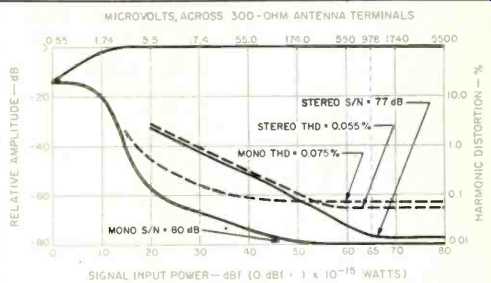
Fig. 1--Mono and stereo quieting and distortion characteristics, FM
tuner section.
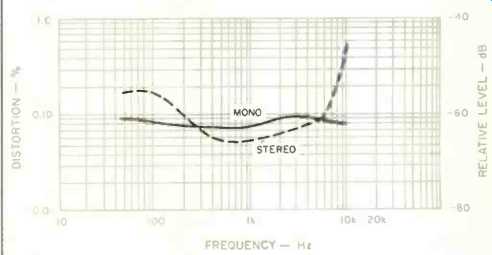
Fig. 2--THD vs. modulating frequency, FM tuner section.
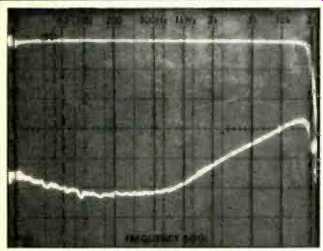
Fig. 3--Frequency response (upper VI trace) and separation vs. frequency,
FM tuner section.
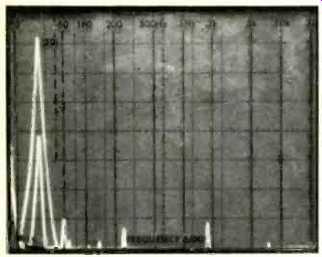
Fig. 4--Crosstalk and distortion products with i 5-kHz modulating signal.
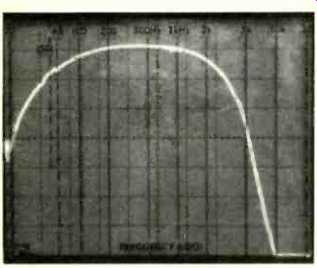
Fig. 5--Frequency response, AM tuner section.
Thirteen silver-colored square touch buttons are arranged along the lower right portion of the front panel. The first of these is used to select the appropriate power meter range.
"Ultralow Bass EQ" and high-cut filter are activated by the next two buttons. "Mute Off/Mono" and loudness buttons are next, followed by selectors for tape "Monitor," "2/1," and "Dubbing." The remaining five buttons are interlocked and used to select program source (AM, FM, AUX, CD, and phono). The vertically oriented master volume-control slider is located at the extreme right of the panel.
The Sherwood S-2680CP's rear panel is equipped with a swing-away AM antenna bar; two sets of tape in/out jacks; two pairs of color-coded, spring-loaded speaker-cable terminals; 300-ohm/75-ohm FM and external AM antenna terminals; a chassis ground terminal, and a pair of a.c. convenience receptacles (one switched, the other unswitched). The usual array of phono and high-level inputs are on the rear panel (near the chassis ground terminal), as well as an increasingly more common input for a CD player. A fuseholder containing a 5-ampere line fuse is also accessible at the rear panel.
Circuit Highlights
Unlike many manufacturers of audio equipment, Sherwood continues to supply its customers with a complete schematic diagram-a very worthwhile addition to any owner's manual, should servicing become necessary when it is inconvenient to send or bring the unit to an authorized service center.
Four major circuit boards and several smaller ones contain all of the components of the S-2680CP. The r.f. amplifier of the FM tuner front-end utilizes a dual gate FET, and separate bipolar mixer and oscillator stages. Ceramic filters are used as tuning circuits between i.f. stages, and multipurpose ICs are used for limiter-detector and multiplex decoder circuitry. A microprocessor IC is located on the memory/display board along with the necessary driving circuitry for the frequency displays. Phono preamplifier circuitry is also mounted on the tuner board, and input stages for the phono circuits use FETs. Eight semiconductors are used for each channel of phono preamplification, with RIAA equalization incorporated in the usual feedback arrangement between stages.
A single IC handles the active circuitry of the tone controls, which are incorporated in an inverse feedback loop of the familiar Baxandall arrangement. Power amplifier circuitry is contained on its own separate p.c. board, with hybrid monolithic IC packages containing the power output modules. Relay protection circuits are incorporated in series with the amplifier's left and right output lines. The power transformer used in this receiver has separate secondary windings for high and low regulated supply voltages. All secondary lines are fused, as is the fuse found in the primary line of the power transformer.
Tuner Measurements
Usable sensitivity in mono measured 12.0 dBf (2.2 µV across 300 ohms), a bit short of Sherwood's ambitious claim of 9.3 dBf but of no major concern to me, since the "least usable sensitivity" specification has long since ceased to be important from a practical point of view.
Sensitivity for 50-dB quieting, on the other hand, measured 15 dBf (3.1 µV at 300 ohms) in mono and 36.0 dBf in stereo, both of which are very good figures. S/N ratio measured 80 dB in mono, exactly as claimed, and 2 dB better than claimed in stereo, or 77 dB. Harmonic distortion, for a 1-kHz 100%-modulation signal, was also lower than claimed, both in mono and stereo; it was 0.075% in mono and 0.055% in stereo. Distortion and quieting characteristics as a function of signal strength are plotted in Fig. 1. In Fig. 2, I have plotted harmonic distortion as a function of modulating frequency for both mono and stereo reception. At 100 Hz, THD in mono measured 0.085%, while in stereo the reading at this modulating frequency was 0.17%. At 6 kHz, THD in mono was 0.085%; in stereo it remained a very low 0.09%. Figure 3 is a 'scope photo of a spectrum-analyzer sweep showing FM frequency response (upper trace) and stereo separation. Deviation from flat response was-0.7 dB at 30 Hz and-1.1 dB at 15 kHz. Separation measured 51 and 50 dB at 1 kHz for the left and right channels, respectively. At 100 Hz, separation from left to right channel was still a very high 48 dB, and 49 dB from right to left channel. Separation decreased to 30 dB (left to right) and 29 dB (right to left) at the 10-kHz test frequency.
Figure 4 shows results obtained when a 5-kHz modulated FM signal was applied to the antenna terminals of this unit, with the outputs examined over a linear frequency range from 0 Hz to 50 kHz. The tall spike at the left is the desired 5 kHz output signal as seen at the left-channel output. The shorter spike and other crosstalk products were obtained by examining the right-channel output. Unwanted 19-kHz, 38 kHz and distortion components were extremely low compared with results I have obtained when this test was applied to many other receivers. In fact, in a separate measurement I determined that subcarrier product rejection was better than 71 dB, while SCA rejection was 69 dB. Alternate channel rejection was excellent, at 82 dB, and capture ratio, though falling a bit short of the claimed 1.2 dB, measured a perfectly satisfactory 1.5 dB for this tuner section. Image, i.f., and spurious rejection all measured in excess of 90 dB. AM frequency response was, as usual, plotted with a spectrum analyzer, this time sweeping logarithmically from 20 Hz to 20 kHz. The results shown in Fig. 5 are, to put it mildly, disappointing; the-6 dB points were reached at approximately 60 Hz and 2.5 kHz.
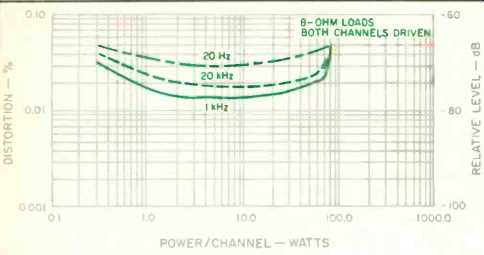
Fig. 6--Harmonic distortion vs. power output per channel at three frequencies.
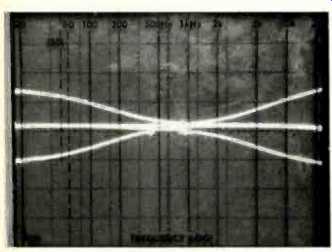
Fig. 7--Tone control boost and cut range.
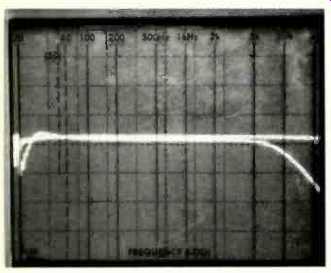
Fig. 8--High-cut filter and ultra low bass EQ characteristics, shown
relative to flat response
Power Amplifier and Preamplifier Measurements
The power amplifier section of the Sherwood S-2680CP delivered 78.1 watts per channel at mid-frequencies for its rated THD of 0.05% while driving 8-ohm load impedances.
At the frequency extremes, power output dropped somewhat, to just under 75 watts per channel for the same level of distortion. At rated output (70 watts per channel, 8-ohm loads), THD dropped to 0.025%, while SMPTE-IM distortion measured 0.04% as against 0.05% claimed. Dynamic headroom was just over 10 dB. Damping factor, referred to 50 Hz and 8-ohm loads, measured 58 as opposed to the 70 measured by Sherwood using a 1-kHz signal and 8-ohm loads. Figure 6 shows the levels of THD as a function of power output for three key frequencies (1 kHz, 20 Hz, 20 kHz). CCIF-IM distortion (twin-tone measurement method) was 0.008% at rated output; IHF IM measured a somewhat higher 0.05% at the same level of power output.
Figure 7 shows the maximum boost and cut range of the bass and treble controls. Vertical sensitivity in this display was 10 dB per division and, as in the case of Figs. 3, 5 and 8, the frequency sweep is logarithmic, from 20 Hz to 20 kHz.
Figure 8 shows the effect of turning on the high-cut filter and the ultra-low bass EQ circuit. The latter provides a modest amount of bass boost at around 30 Hz and then attenuates all lower frequency signals sharply. Users of this receiver who also own turntables which exhibit a moderate amount of rumble will find this circuit especially useful, since it effectively attenuates rumble frequencies without audibly affecting even the very lowest musical bass tones present in a recording.
Although Sherwood continues to quote input sensitivity figures and signal-to-noise ratios referred to rated output, I measure these important characteristics in accordance with IHF (now EIA) standards, so my results cannot be easily compared with Sherwood's. Input sensitivity for the phono inputs measured 0.32 mV for 1-watt output. For the high-level inputs, 19 mV of input were required to drive the amplifier to a 1-watt output level with the volume control at maximum. Phono signal-to-noise ratio, using a 5-mV input signal and with the volume control set for 1-watt output, measured 80 dB, A-weighted. With a 0.5-V signal applied to the high-level inputs and again adjusting volume for a 1-watt output, noise was 78 dB lower than the reference 1-watt level. At minimum volume setting, noise was 84 dB below 1 watt, A-weighted. Phono overload measured 290 mV, well over the level claimed. Frequency response for the phono inputs deviated from precise RIAA equalization by no more than +0.2 dB at the treble end of the spectrum and-0.5 dB at 30 Hz. High-level inputs exhibited flat frequency response (within 1 dB) from 5 Hz to 21 kHz, and the-3 dB roll-off points were at 2 Hz and 30 kHz.

Note: that one input on the Sherwood S-2860's rear panel is labeled "CD."
Use and Listening Tests
Most of the 12-page owner's booklet explains the function of each pushbutton and control on the front panel and the hookup diagram of the rear panel. Only one page of the booklet actually details step-by-step operating instructions for listening to the various program sources and for "memorizing" favorite AM and FM stations. I mention this not by way of a criticism, but rather as an indication of how well the front-panel controls are laid out and how clearly they are identified. My fingers seemed to go directly to the controls and touch buttons I needed when I was putting the receiver through its paces during bench and listening tests. The LED and fluorescent displays were clear and easily read, even at a distance.
As for the performance of the receiver during listening tests, I found the FM tuner section to be the winner, if one section of this receiver must be singled out above the others. Auto tuning was always precise, as one would expect (but doesn't always get) from a frequency-synthesized tuning system. The amplifier section, while not unusual in its performance, delivered adequate power for use with speakers of medium-to-high efficiency--even when the program source was Compact Discs (as it very often is, now, in my listening tests). The phono inputs handled my best moving magnet cartridges well, but users should note that the 47 kilohm resistances provided at the inputs to the left and right phono stages are shunted with 150-pF capacitors. If your cartridge is optimally loaded with around 250 pF or even a bit less (as most popular MM cartridges are), you may have to hunt for some low-capacitance audio cable or else keep the length of the cables from turntable to phono inputs extremely short to prevent a high total capacitance from attenuating treble response. (Of course, if you are handy with a pair of cutting pliers and a screwdriver, you could get inside the receiver yourself and clip out the 150-pF capacitors altogether.) Overall, I found the S-2680CP receiver to be a worthy entry in Sherwood's line of products, especially in view of its modest price and its superior FM and stereo FM performance.
-Leonard Feldman
(Audio magazine, June 1984)
Also see:
Sherwood Model S-7200 AM /FM Stereo Solid State Receiver (May 1973)
Sherwood Model Micro/CPU 100 Stereo FM Tuner (Nov. 1977)
= = = =